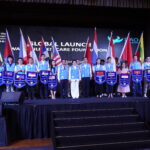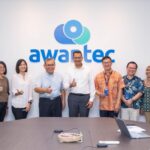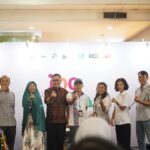This is the last part of the four-part series of The Future of Media and Information Literacy (MIL) in the Philippines. It will explore the impact of MIL on sustainable development goals, educational initiatives, and strategies for advancing MIL.
In the context of the Philippines, Media and Information Literacy (MIL) initiatives are playing a vital role in driving progress and fostering a more sustainable and equitable society. MIL emerges as a critical skill set for navigating the complexities of the digital age.
The United Nations’ Sustainable Development Goals (SDGs) paint a global vision for a better future, through MIL. Since MIL emphasizes critical thinking and responsible digital engagement, this serves as a powerful tool for achieving many of these goals.
This article delves into the profound connection between MIL and the SDGs. It highlights how MIL empowers individuals and communities to actively participate in shaping their future. It will also examine specific examples of how MIL initiatives in the Philippines are making a tangible difference in areas such as education, gender equality, and reducing inequalities. Additionally, it will outline key strategies for advancing MIL education and fostering a culture of informed citizenship throughout the country.
MIL and the Sustainable Development Goals: Empowering the Philippines
The United Nations’ Sustainable Development Goals (SDGs) present a global vision for a better future. Media and Information Literacy (MIL) serves as a powerful tool for achieving many of these goals. In the context of the Philippines, MIL initiatives are playing a vital role in driving progress and fostering a more sustainable society.
Specific SDGs Boosted by MIL
• Quality Education (SDG 4): MIL equips learners to critically analyze information. This supports lifelong learning.
• Gender Equality (SDG 5): MIL bridges the gender gap by ensuring equal access to information and digital resources.
• Reduced Inequalities (SDG 10): MIL helps bridge the digital divide. It ensures social inclusion.
• Peace, Justice, and Strong Institutions (SDG 16): MIL fosters informed citizens who contribute to democratic processes.
MIL Success Stories in the Philippines
The Philippines has embraced MIL with several notable initiatives:
• EduAksyon: This program promotes digital literacy in rural areas. This promotes quality education and gender equality.
• Bayanihan for Digital Transformation: By providing digital learning platforms to underserved communities, this project bridges that gap to reduce inequalities.
Strategies for Advancing MIL in the Philippines
The future of MIL in the Philippines rests on a multi-pronged approach:
• Policy Development: Comprehensive policies are needed to integrate MIL into the national education system and address the digital divide.
• Collaboration: Partnerships among stakeholders are essential for creating effective MIL programs. Different stakeholders have different specializations that they could contribute to make the delivery of the initiatives more effective.
• Technology: Online courses, webinars, and digital literacy apps can enhance MIL education.
• Community Engagement: Awareness campaigns tailored to local needs can boost MIL participation at the grassroots level.
Conclusion
MIL is not merely about using digital tools. It is about empowering individuals to navigate the digital world responsibly. The Philippines’ commitment to MIL initiatives demonstrates its dedication to achieving the Sustainable Development Goals to promote a more equitable, just, and sustainable society. By prioritizing MIL, the country is building a future where informed citizens actively contribute to a brighter tomorrow.
This press release has also been published on VRITIMES





